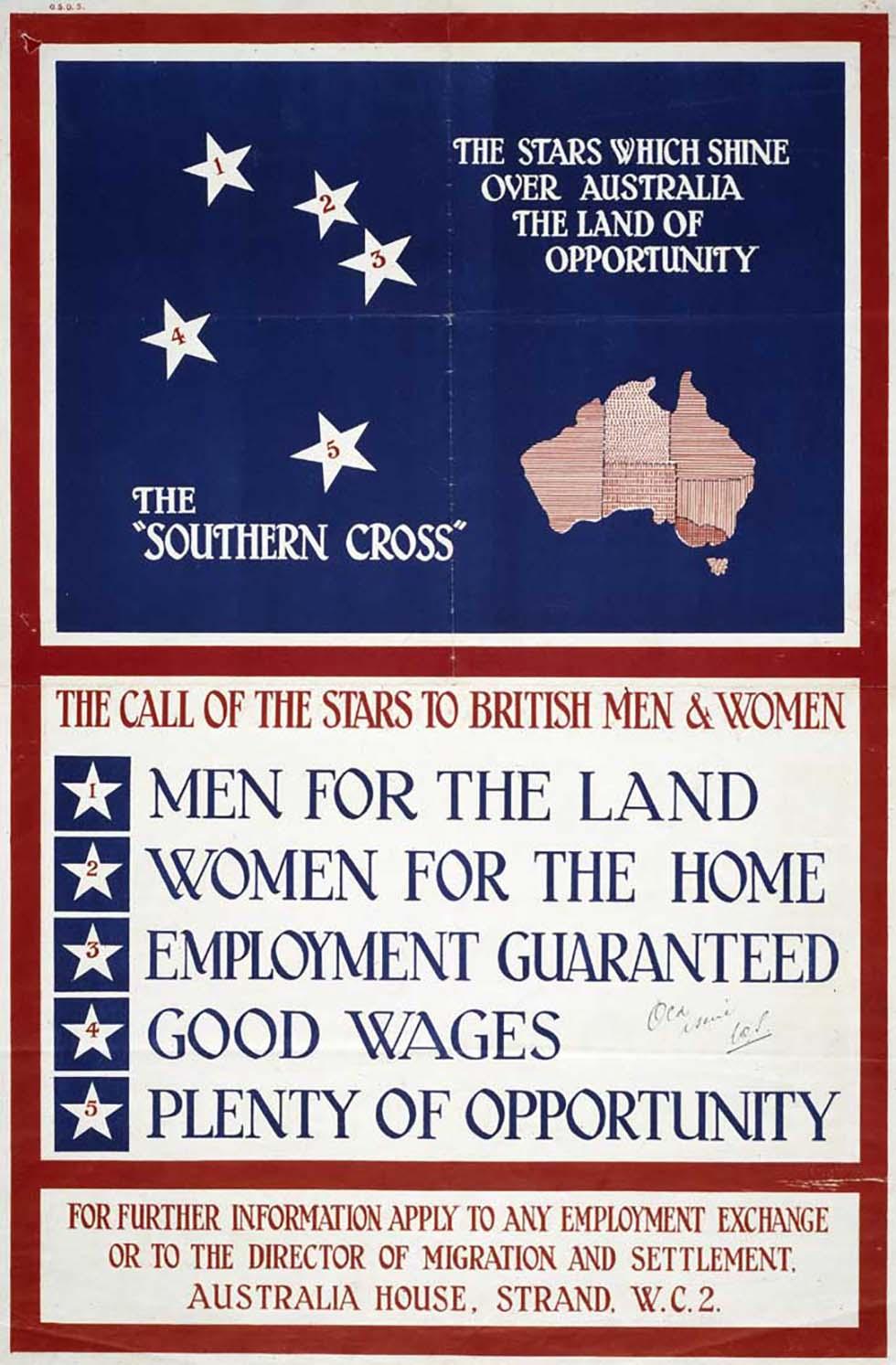
Poster addressed to British men and women.
Aboriginal and Torres Strait Islander people should be aware that the National Archives' website and collection contain the names, images and voices of people who have died.
Some records include terms and views that are not appropriate today. They reflect the period in which they were created and are not the views of the National Archives.


Poster addressed to British men and women.
[Page 1]
[All textual information is in offset lithographs within the design of the poster, divided into 3 boxed sections]
[The first section includes an image of the Southern Cross and a map of Australia]
[Capitalised title] THE “SOUTHERN CROSS”
[Capitalised subtitle] THE STARS WHICH SHINE OVER AUSTRALIA THE LAND OF OPPORTUNITY
[The second section includes 5 slogans]
[Capitalised title] THE CALL OF THE STARS TO BRITISH MEN & WOMEN
1. MEN FOR THE LAND
2. WOMEN FOR THE HOME
3. EMPLOYMENT GUARANTEED
4. GOOD WAGES
5. PLENTY OF OPPORTUNITY
[The third section includes a body of text]
[Capitalised] FOR FURTHER INFORMATION APPLY TO ANY EMPLOYMENT EXCHANGE OR TO THE DIRECTOR OF MIGRATION AND SETTLEMENT. AUSTRALIA HOUSE, STRAND. W.C.2.
This is a coloured red, white and blue poster encouraging Britons to migrate to Australia. It is divided into three boxes. The top box includes a map of Australia and the Southern Cross, with the headline ‘The stars which shine over Australia the land of opportunity’. The middle box is headed ‘The call of the stars to British men & women’, followed by five slogans. The bottom box explains where to get more information.
Learning resource text © Education Services Australia Limited and the National Archives of Australia 2010.
Learn how to interpret primary sources, use our collection and more.
